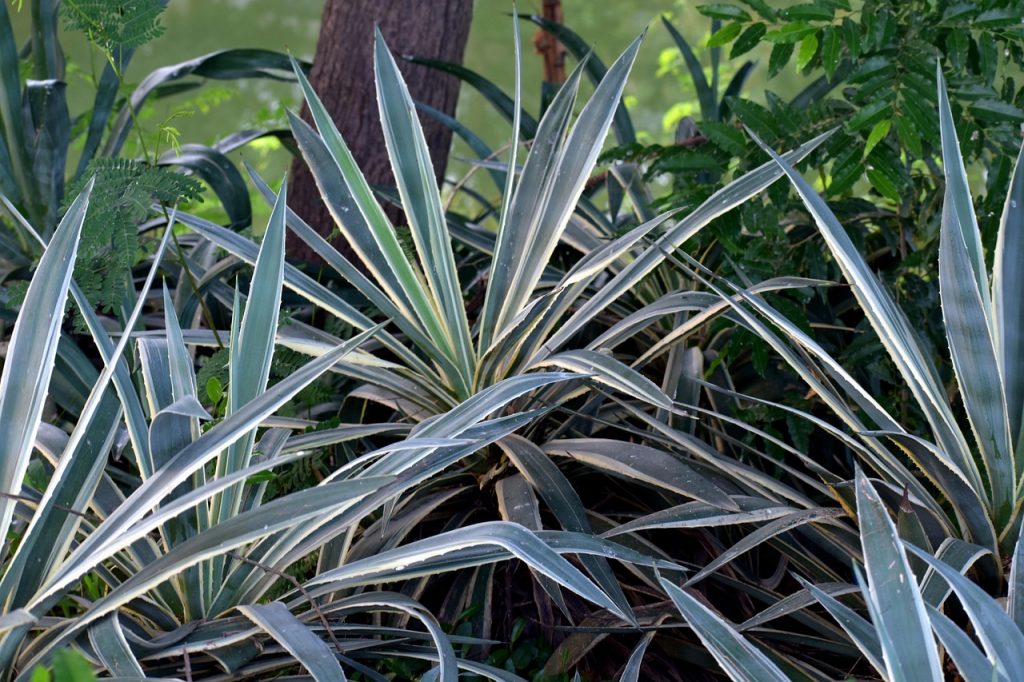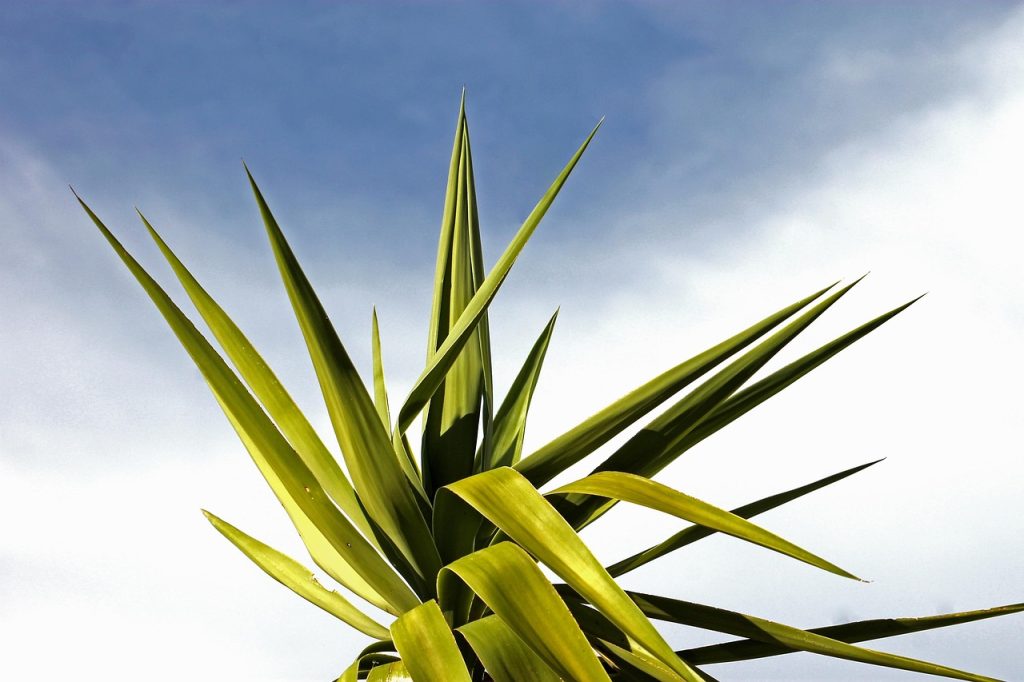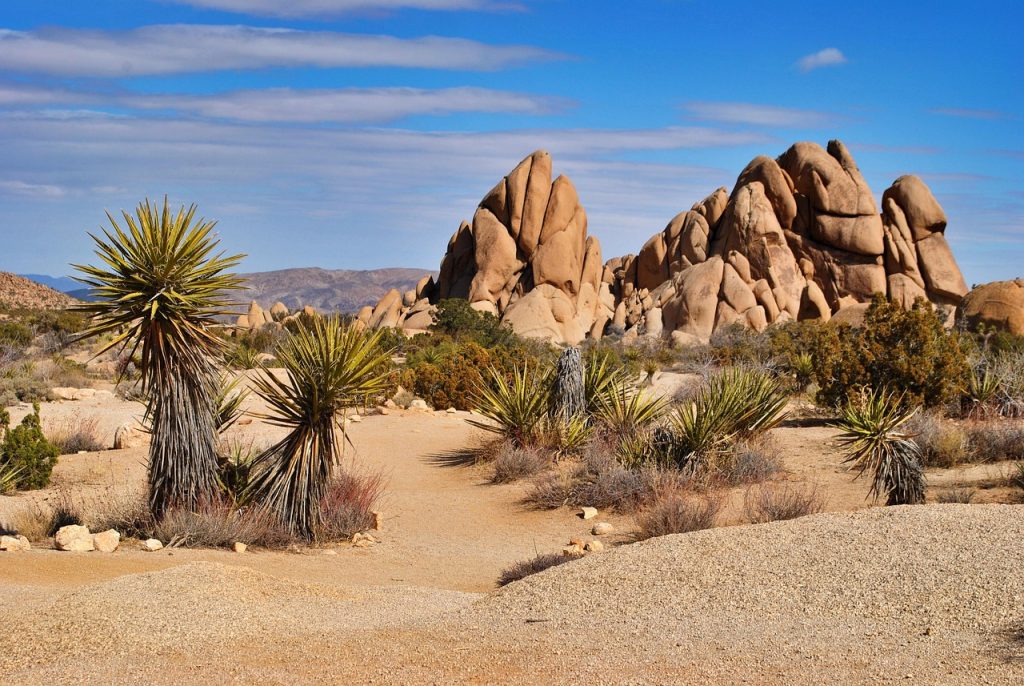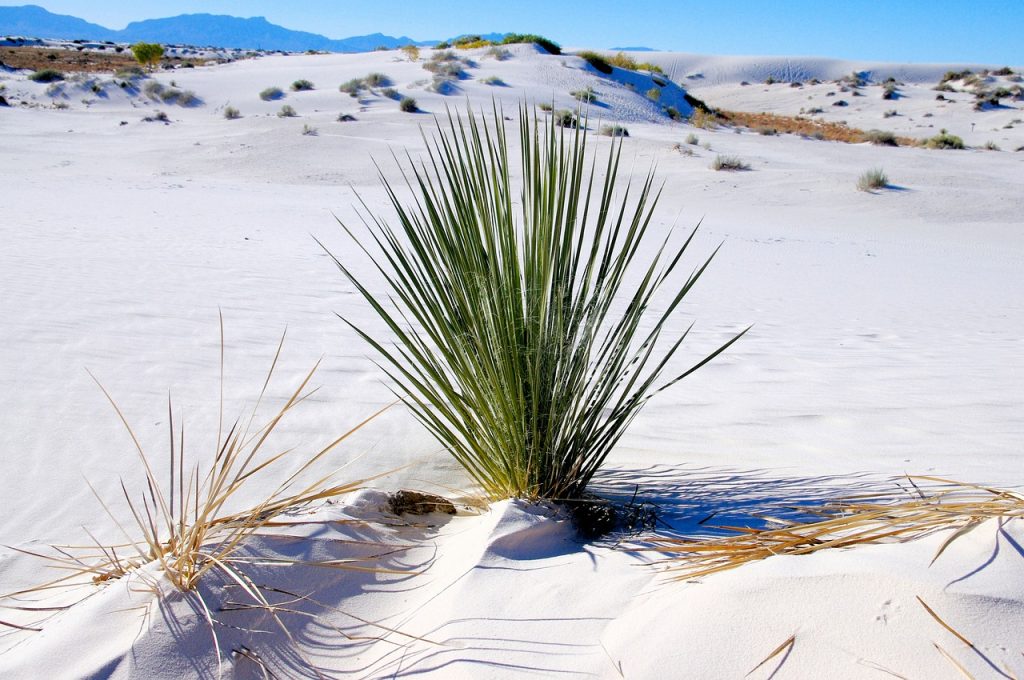If you’re looking for a tough, low-maintenance plant that adds a bold, architectural touch to your home or garden, the yucca plant is a perfect choice. Known for its sword-like leaves and resilience, the yucca thrives both indoors and outdoors with minimal attention. However, proper yucca plant care ensures that it remains vibrant and long-lived.
In this detailed guide, we’ll cover everything you need to know about yucca plant care, including watering, light, soil, pruning, and propagation, to help your yucca flourish year-round.

What Is a Yucca Plant?
The yucca plant belongs to the Asparagaceae family and includes about 40 species of evergreen plants. Native to arid regions of North and Central America, yuccas are well adapted to drought and poor soil. Their striking, spiky leaves and tall flowering spikes make them a popular choice for both indoor and outdoor landscapes.
Common Yucca Varieties:
- Yucca elephantipes (Spineless Yucca) – Ideal for indoor spaces.
- Yucca filamentosa (Adam’s Needle) – Great for outdoor gardens.
- Yucca gloriosa (Spanish Dagger) – Hardy and striking in appearance.
- Yucca brevifolia (Joshua Tree) – Famous desert species, best for outdoor climates.
Light Requirements for Yucca Plant Care
Yucca plants love bright light. For outdoor growth, they thrive in full sun. If kept indoors, place them near a south- or west-facing window where they receive plenty of natural light.
- Indoors: Bright, indirect sunlight for at least 6 hours a day.
- Outdoors: Full sunlight is ideal; partial shade is acceptable in hot climates.
Tip: Insufficient light can cause the plant to grow tall and leggy, while too much direct light through glass can burn the leaves.
Watering Needs
Yucca plants are drought-tolerant and prefer to stay on the dry side. Overwatering is the most common mistake in yucca plant care.
- Indoor Yucca Plant Care: Water only when the top 2–3 inches of soil are dry.
- Outdoor Yucca Plant Care: During summer, water once every 7–10 days; reduce to once every few weeks in cooler months.
Signs of Overwatering:
- Yellow or soft leaves
- Root rot or foul smell
- Mushy stem base
Always ensure proper drainage to prevent waterlogging.
Soil Requirements
Yucca plants need well-draining soil to prevent root rot. The best soil mix is sandy or gritty with low organic matter.
Ideal Soil Mix for Yucca Plant Care:
- 2 parts cactus mix or sandy soil
- 1 part perlite or pumice
- 1 part potting soil (optional for added nutrients)
Avoid heavy clay soils, which retain water and can suffocate the roots.

Temperature and Humidity
Yucca plants prefer warm, dry environments, making them suitable for both indoor and outdoor settings.
- Ideal Temperature Range: 60°F to 85°F (15°C to 29°C)
- Minimum Tolerance: Down to 30°F (-1°C) for hardy varieties
- Humidity: Low to moderate; avoid overly humid areas
Tip: If you live in a cold region, keep potted yuccas indoors during winter.
Fertilizing Yucca Plants
Yucca plants are not heavy feeders but benefit from occasional feeding during the growing season.
Fertilizer Tips:
- Use a balanced liquid fertilizer (10-10-10) every 2–3 months during spring and summer.
- Avoid fertilizing during fall and winter.
- Over-fertilizing can lead to leaf burn or weak growth.
Pruning and Maintenance
Pruning helps maintain the shape and health of your yucca plant.
How to Prune Yucca Plants:
- Use sterilized shears to remove yellow or damaged leaves.
- Trim off dead flower stalks after blooming.
- For overgrown plants, cut back the top portion, new shoots will appear below the cut.
Bonus Tip: You can use trimmed sections for propagation.
Yucca Plant Flowers
Yucca plants produce tall flower spikes covered in clusters of white or cream-colored blooms, usually once a year during summer.
- Indoor plants may rarely bloom without enough sunlight.
- Outdoor yuccas can grow spectacular flower spikes reaching several feet tall.
After flowering, remove the spent stalks to keep the plant looking neat.

Propagating Yucca Plants
Propagation is an easy and rewarding part of yucca plant care. You can multiply your plant through cuttings, offsets, or division.
Methods of Yucca Propagation:
1. Stem Cuttings
- Cut a healthy stem (6–8 inches long).
- Let it dry for a day or two to prevent rot.
- Plant it in well-draining soil and water lightly.
2. Offsets (Pups)
- Mature yuccas often produce small pups around the base.
- Separate these carefully with a clean knife and replant them.
3. Division
- Divide the root ball during repotting and plant each section separately.
Repotting Yucca Plants
Yucca plants don’t need frequent repotting. They prefer slightly root-bound conditions.
When to Repot: Every 2–3 years or when roots start breaking through the pot.
Steps for Repotting:
- Choose a pot slightly larger than the current one.
- Add fresh, well-draining soil.
- Gently place the plant and fill around the roots.
- Water lightly and let it settle.
Common Problems and Solutions
| Problem | Cause | Solution |
|---|---|---|
| Yellow Leaves | Overwatering | Reduce watering and check drainage |
| Brown Tips | Low humidity or fluoride in water | Use filtered water |
| Soft, Droopy Stems | Root rot | Remove damaged roots and replant |
| No Growth | Low light or poor soil | Move to brighter location, refresh soil |
Yucca Plant Care Indoors vs Outdoors
| Aspect | Indoors | Outdoors |
|---|---|---|
| Light | Bright, indirect sunlight | Full sun |
| Watering | Every 2–3 weeks | Once a week (in summer) |
| Temperature | 60–80°F (15–26°C) | 50–90°F (10–32°C) |
| Soil | Well-draining potting mix | Sandy or rocky soil |
| Blooming | Rare indoors | Common in summer |
Yucca Plant Toxicity
While yucca plants are beautiful, their leaves contain saponins, which can be toxic to pets if ingested. Keep your plant away from curious cats and dogs.
Symptoms of ingestion: Vomiting, drooling, or lethargy in pets.

Benefits of Growing a Yucca Plant
- Air Purifying: Removes toxins like benzene and formaldehyde.
- Low Maintenance: Thrives on neglect.
- Aesthetic Appeal: Adds structure and greenery indoors.
- Drought Resistant: Perfect for dry regions.
- Long Lifespan: Can live for decades with proper care.
Frequently Asked Questions (FAQs)
Water only when the top few inches of soil are dry. Overwatering can harm the roots.
Yes. Select a spineless variety, such as Yucca elephantipes, and place it near a bright window.
It could be due to low humidity, fluoride in water, or excessive sunlight. Trim the affected parts and adjust care.
A balanced liquid fertilizer every few months during the growing season is enough.
Hardy varieties can withstand light frost, but indoor care or mulching is beneficial in colder climates.
Conclusion
Yucca plant care is simple, making it one of the most forgiving and rewarding plants for any gardener. Whether indoors or outdoors, this plant thrives with minimal water, plenty of sunlight, and well-draining soil.
By following the right care routine from pruning and propagation to managing light and watering, your yucca will remain a stunning centerpiece for years.
If you’re new to plant care or want a low-effort yet striking plant, the yucca plant is an excellent choice that combines durability, elegance, and style in one hardy package.
Pro Tip: Keep your yucca in a bright spot, water sparingly, and let nature do the rest. With just a little attention, this desert beauty will reward you with years of healthy, vigorous growth.